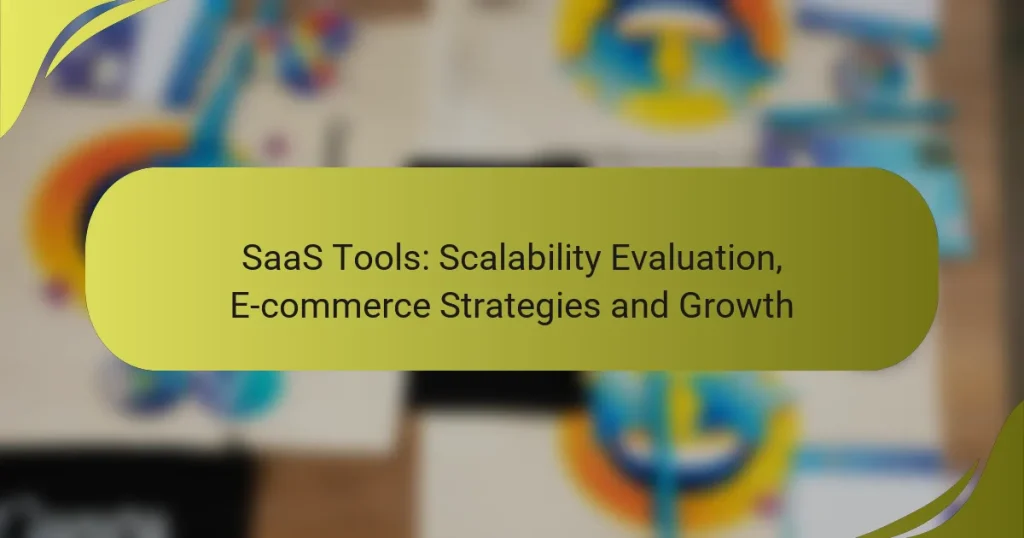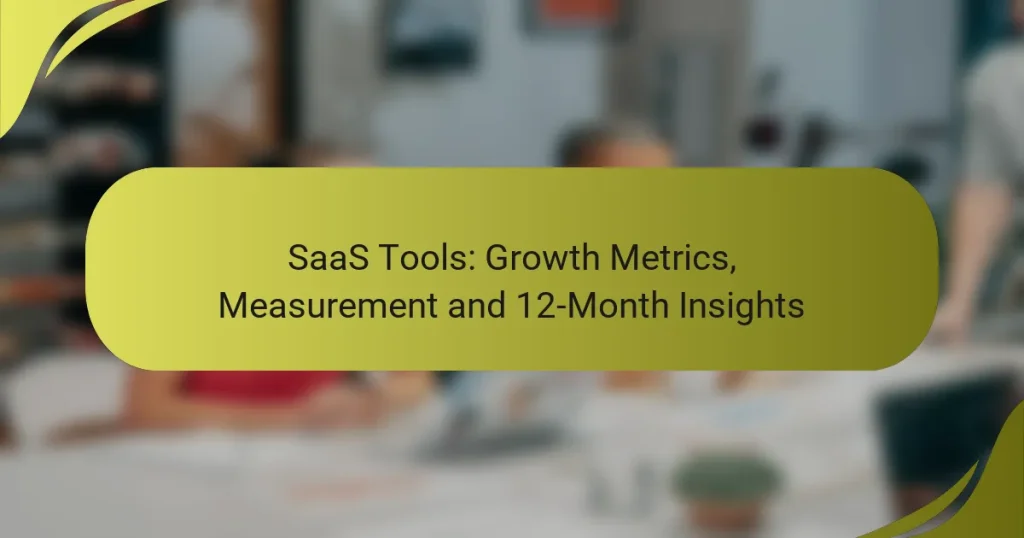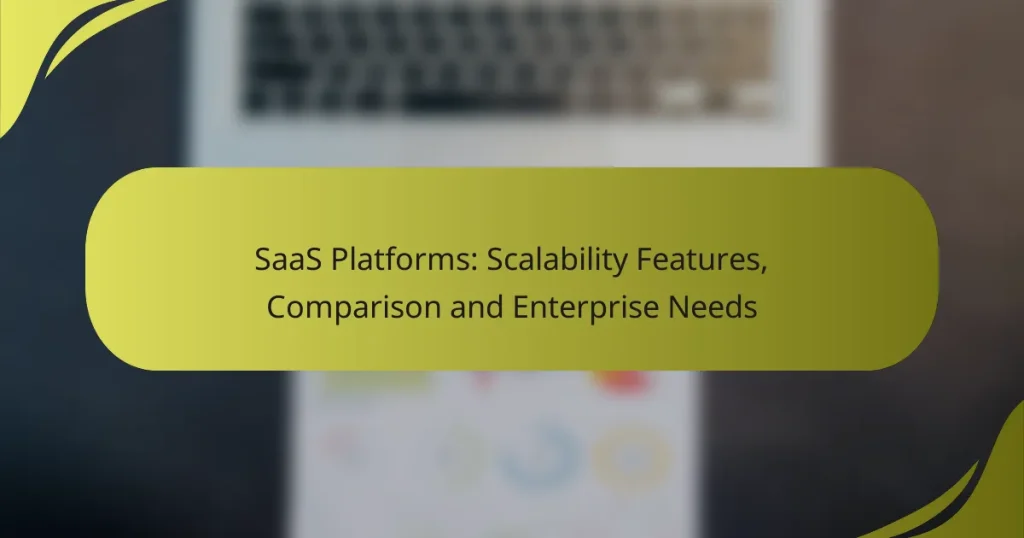SaaS business management software is essential for companies aiming for scalability and growth. With platforms like Salesforce, Zoho One, and HubSpot, businesses can streamline operations, enhance collaboration, and leverage data for informed decision-making. By automating processes and providing actionable insights, these tools empower organizations to scale efficiently and adapt to evolving market demands.
SaaS Tools: Growth Metrics, Measurement and 12-Month Insights
SaaS Platforms: Scalability Features, Comparison and Enterprise Needs
SaaS Solutions: Future Growth, Planning and Flexibility
SaaS Solutions: Scalability, Flexibility and Startup Growth
SaaS Solutions: Scaling Operations, Best Practices and Tech Startups
SaaS: Sustainable Growth, Small Business Support and Strategies
What are the best SaaS business management software options for scalability?
Some of the best SaaS business management software options for scalability include Salesforce, Zoho One, Monday.com, Asana, and HubSpot. These platforms are designed to grow with your business, offering features that enhance collaboration, project management, and customer relationship management.
Salesforce
Salesforce is a leading CRM platform that provides a comprehensive suite of tools for managing customer relationships and sales processes. Its scalability is supported by customizable solutions that can adapt to businesses of varying sizes, from startups to large enterprises.
Key features include automation of sales tasks, detailed analytics, and integration capabilities with numerous third-party applications. Businesses should consider the costs associated with add-ons and the learning curve for new users when implementing Salesforce.
Zoho One
Zoho One offers an all-in-one suite of applications that cover various business functions, including CRM, project management, and finance. Its scalability is evident in its modular approach, allowing businesses to add or remove applications as needed.
This platform is particularly cost-effective for small to medium-sized enterprises, providing a wide range of features at a competitive price point. Users should evaluate which modules are essential for their operations to avoid unnecessary expenses.
Monday.com
Monday.com is a flexible work operating system that enables teams to manage projects, workflows, and tasks efficiently. Its scalability is facilitated through customizable boards and automation features that can be tailored to fit different team needs.
Businesses can start with basic project management tools and expand to more complex workflows as they grow. It’s important to regularly assess team usage and adjust plans accordingly to maximize value from the platform.
Asana
Asana is a project management tool that helps teams organize and track their work. Its scalability is supported by features such as task dependencies, timelines, and reporting tools that can accommodate growing project demands.
Asana is user-friendly, making it easy for teams to adopt. However, businesses should ensure they provide adequate training to maximize the platform’s capabilities and prevent underutilization.
HubSpot
HubSpot is a powerful inbound marketing, sales, and service platform that scales with your business. It offers a range of tools for managing customer interactions, marketing campaigns, and sales pipelines.
HubSpot’s free tier provides essential features, while paid plans unlock advanced capabilities. Companies should assess their growth trajectory and choose a plan that aligns with their long-term goals to avoid overpaying for unnecessary features.
How does SaaS business management software enhance growth?
SaaS business management software enhances growth by automating processes, providing actionable insights, and facilitating teamwork. These tools allow businesses to scale efficiently by optimizing operations and leveraging data for informed decision-making.
Streamlined operations
Streamlined operations are a key benefit of SaaS business management software, as it automates repetitive tasks and integrates various functions into a single platform. This reduces manual errors and saves time, allowing teams to focus on strategic initiatives rather than administrative duties.
For example, invoicing, project management, and customer relationship management can all be handled within one system, minimizing the need for multiple software solutions. This consolidation can lead to significant time savings, often reducing operational overhead by 20-30%.
Data-driven decision making
Data-driven decision making is facilitated by the analytics capabilities of SaaS business management software. These tools collect and analyze data in real-time, providing insights that help businesses identify trends, forecast demands, and make informed choices.
Businesses can leverage dashboards and reporting features to visualize key performance indicators (KPIs) and track progress against goals. This approach often leads to improved outcomes, as decisions based on solid data tend to yield better results than those based on intuition alone.
Improved collaboration
Improved collaboration is another significant advantage of SaaS business management software, as it enables teams to work together seamlessly, regardless of their physical location. Cloud-based solutions allow for easy sharing of documents and real-time communication, fostering a collaborative environment.
Features such as shared project boards, instant messaging, and integrated calendars help teams stay aligned and informed. This enhanced collaboration can lead to faster project completion times and increased employee satisfaction, as team members feel more connected and engaged in their work.
What features should you look for in SaaS business management software?
When selecting SaaS business management software, prioritize features that enhance scalability, integration, and user experience. These elements are crucial for supporting growth and ensuring smooth operations as your business evolves.
Scalability options
Scalability options allow your software to grow alongside your business. Look for solutions that can handle increasing data volumes and user loads without significant performance degradation.
Consider platforms that offer tiered pricing models, enabling you to pay for only what you need as you expand. This approach helps manage costs while ensuring you have access to necessary resources.
Integration capabilities
Integration capabilities are essential for seamless data flow between your SaaS software and existing tools. Ensure the software supports popular APIs and third-party applications relevant to your industry.
Evaluate the ease of integration; a user-friendly setup can save time and reduce errors. Look for software that offers pre-built connectors or customizable integration options to streamline your operations.
User-friendly interface
A user-friendly interface enhances productivity by making it easier for team members to navigate the software. Prioritize solutions with intuitive designs that minimize the learning curve for new users.
Consider software that offers customizable dashboards and clear navigation paths. This can significantly improve user adoption and overall satisfaction, leading to better utilization of the software’s features.
How to choose the right SaaS business management software?
Choosing the right SaaS business management software involves understanding your specific business needs, evaluating pricing models, and considering the level of customer support offered. The right software should align with your growth objectives while providing the necessary tools for scalability.
Assess business needs
Start by identifying the key functionalities your business requires, such as project management, invoicing, or customer relationship management. Make a list of must-have features versus nice-to-have ones to prioritize your selection process.
Consider the size of your team and the complexity of your operations. For instance, a small startup may need basic features, while a larger enterprise might require advanced analytics and integrations with other systems.
Evaluate pricing models
Different SaaS providers offer various pricing structures, including subscription-based, tiered, or pay-as-you-go models. Assess which model fits your budget and usage patterns best.
Look for transparency in pricing and any hidden costs, such as setup fees or charges for additional users. Many providers offer free trials, allowing you to test the software before committing financially.
Consider customer support
Reliable customer support is critical for resolving issues quickly and minimizing downtime. Check the support options available, such as live chat, email, or phone support, and their availability hours.
Read reviews and testimonials to gauge the quality of customer service. A provider with strong support can make a significant difference in your experience, especially during the initial setup and integration phases.
What are the pricing models for SaaS business management software?
SaaS business management software typically employs various pricing models to accommodate different business needs and budgets. Understanding these models can help organizations choose the right software that aligns with their growth strategies and financial capabilities.
Subscription-based pricing
Subscription-based pricing is the most common model for SaaS business management software. Customers pay a recurring fee, usually monthly or annually, which grants them access to the software and its features. This model provides predictable costs and often includes updates and customer support.
When considering subscription-based pricing, businesses should evaluate their usage patterns and the total cost over time. For example, a small business may find an annual plan more cost-effective than monthly payments, while larger enterprises might benefit from the flexibility of monthly subscriptions.
Tiered pricing plans
Tiered pricing plans offer multiple levels of service at different price points, allowing businesses to select a plan that best fits their needs. Each tier typically includes a set of features, with higher tiers providing more advanced functionalities and support.
For instance, a basic plan might include essential tools for project management, while a premium plan could offer advanced analytics and integrations with other software. This model enables businesses to scale their usage as they grow, but it’s crucial to assess whether the additional features justify the higher costs.
Freemium options
Freemium options provide a basic version of the software at no cost, with the opportunity to upgrade to a paid plan for additional features. This model allows businesses to test the software before committing financially, making it an attractive choice for startups and small enterprises.
However, companies should be cautious about relying solely on freemium models, as the limited features may not support long-term growth. It’s advisable to evaluate the transition to a paid plan when the business needs exceed the capabilities of the free version.
How can SaaS business management software improve reporting and analytics?
SaaS business management software enhances reporting and analytics by providing real-time insights and automated data collection. This allows businesses to make informed decisions quickly, improving overall operational efficiency.
Real-time data tracking
Real-time data tracking enables businesses to monitor key performance indicators (KPIs) as they happen. This functionality helps organizations respond promptly to changes in the market or internal processes, ensuring they remain competitive.
To implement effective real-time tracking, choose software that integrates seamlessly with existing systems and offers customizable dashboards. Look for features that allow you to visualize data through charts and graphs, making it easier to identify trends and anomalies.
Common pitfalls include relying on outdated systems that cannot provide timely updates or failing to train staff on how to interpret the data. Regularly review your tracking metrics to ensure they align with your business goals and adjust as necessary.






